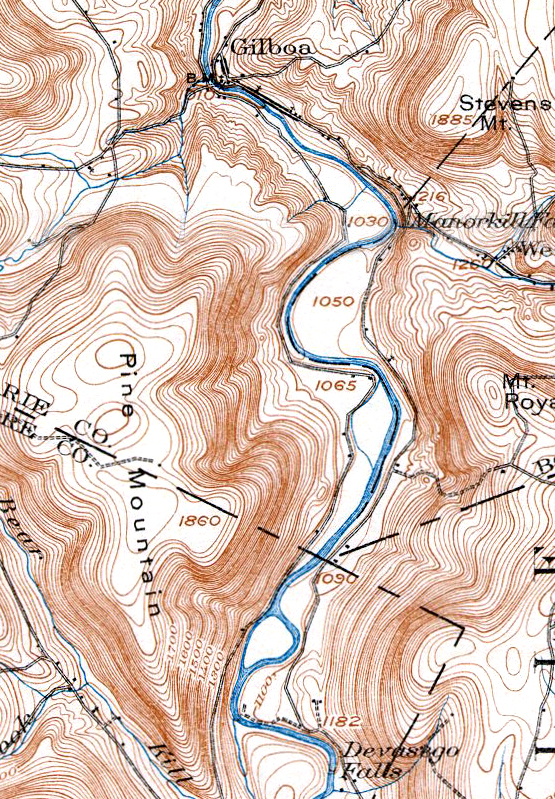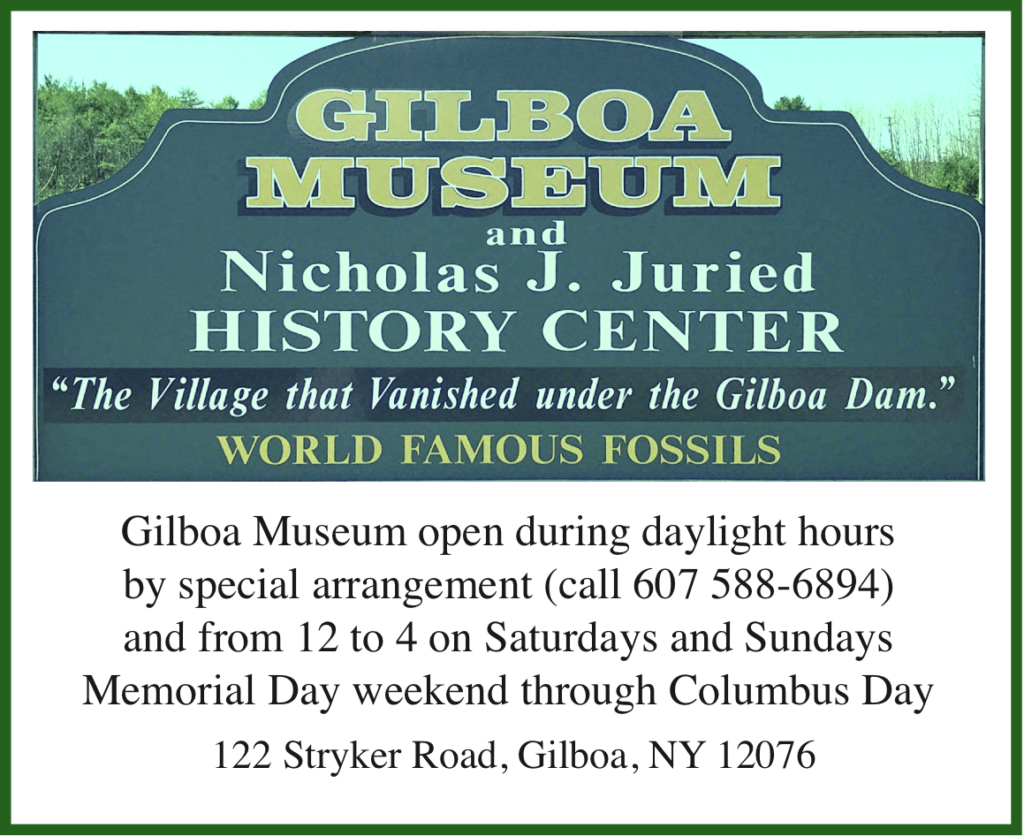

Plans leading up to the Schoharie Reservoir
Plans for the west-of-Hudson watersheds
Under Construction
Our pages covering the west-of-Hudson thread, including the in-depth coverage of the Schoharie Reservoir, has a general outline. But we also have over 1000 photos with captions to illustrate these pages. These need to be input before these pages could even merit the title “beta.”
New York City 1895–1910
The NYC Story Around 1900
- five downstate counties had become boroughs incorporated into a single political entity—New York City.
- water resources for the city were limited to east of the Hudson locations within the 5 boroughs of the City; Westchester and Putnam counties; and the western end of Long Island.
- these sources were insufficient for the projected growth of the new metropolis.
- a new agency, the Board of Water Supply, was created to tap additional water sources.
- the BWS planned to tap the Catskill watershed for immediate relief for the city, followed soon after with additional access to the Delaware River watershed.
Step 1: To renovate existing infrastructure
- streamline the system’s distribution pipes & valves within the boroughs.
- expand the system to handle additional water.
- enlarge the Kensico Reservoir to receive Catskill watershed.
- reconstruct west Putnam County Reservoirs to receive Delaware waters.
- this would be accomplished by about 1910, although it was naturally an on-going process.
Step 2: To access the (west-of-Hudson) Catskill watershed:
- create the Catskill Aqueduct from Kensico reservoir north nearly to Kingston, and then under the Hudson River to access the waters of the Catskill Mountains. The Catskill Aqueduct has been in service since 1915.
- the largest, nearest, west-of-Hudson river was the Esopus, and a reservoir at Shokan would feed its water into the Catskill Aqueduct. The Ashokan reservoir was completed in 1915.
- smaller watersheds of the Catskill, Rondout, and Neversink creeks were considered for feeding the Catskill Aqueduct. However, these waters were not tapped until after the Depression and World War II.
- the other large Catskill watershed was the Schoharie. The plan was to construct a reservoir somewhere around Prattsville, to capture Schoharie water, channel it into a tunnel south to the Esopus Creek, and the combined water could then be channelled to the Ashokan reservoir, through the Catskill Aqueduct, and south to the Kensico Reservoir and New York City. The Schoharie reservoir started sending water south in 1924, and was fully operational by 1927.
Step 3: To access the (west-of-Hudson) Delaware River watershed:
- unrecognized from the vantage point of 1927, the remainder of New York City’s plans were delayed.
- once the Catskill watershed was complete, the plan had been to access the Delaware River watershed using enlarged storage reservoirs in northwestern Putnam County. From that point, a tunnel would be drilled northeast under the Hudson and then to a small reservoir formed by a dam on the Roundout River. This staging area could then be connected to the two branches of the Delaware River.
- in the chief engineer’s annual report of 1925, the BWS projected that New York City would be in worse shape in 1935 than it had been in 1905. The Putnam County reservoirs had been prepared to receive these projected waters, but the Depression of 1929 and the advent of World War II stopped all further work.
- after VE Day, work on the BWS sources were continued, with two small watersheds sending emergency water through the Delaware aqueduct in the 1950s. The final plans were finally achieved with the completion of the Pepacton reservoir in 1955, and the Cannonsville in 1967.
Summary of west-of-Hudson River waters:
Chronologically, there are 6 large, west-of-Hudson infrastructures:
- Ashokan Reservoir & Catskill Aqueduct 1915
Impounds Esopus Creek
Communities Flooded (8): Shokan, Broadhead’s Bridge, Brown’s Station, Olive Bridge, West Hurley, Glenford, Olive, Ashton - Gilboa Reservoir & Shandaken Tunnel 1927
Impounds Schoharie Creek
Communities Flooded (1): Gilboa - Rondout Reservoir & Delaware Aqueduct 1951/1954
- Impounds Rondout Creek
Communities Flooded (3): Eureka, Montele, Lackawac - Neversink Reservoir & Tunnel 1950/1954
Impounds Neversink River
Communities Flooded (3): Neversink, Bittersweet, Aden - Pepacton Reservoir & East Delaware Tunnel 1955
Impounds East Branch of the Delaware River
Communities Flooded (4): Arena, Pepacton, Shavertown, Union Grove - Cannonsville Reservoir & West Delaware Tunnel 1967
Impounds West Branch of the Delaware River
Communities Flooded (5): Beerston, Cannonsville, Granton, Rock Rift, Rock Royal
Navigating our pages
The narrow column on the right has three scroll-down windows (at the end of this window on your phone, pad, or tablet):
Current 2023 activities of the society.
A complete set of links to Facebook, social media, and our society’s web pages.
The benefits of the Gilboa Historical Society and how to join our association.
(opens in a new tab)(opens in a new tab)w, but
- Edit Image

GILBOA MUSEUM OPEN
12 TO 4 Saturday and Sundays
Memorial Day to Columbus Day.
MUSEUM TOURS-ON-CALL
(607) 588-6894 to set up a tour.
Map for the Gilboa Museum.
May, 2024
• Wednesday, 5/15, 6 p.m.:
General program TBA.
• Saturday, 5/25, 12 p.m.:
Gilboa Museum celebrates the season opening.
June, 2024
• Sunday, 6/2, 11 a.m.:
Psychic Fair.
• Wednesday, 6/19, 6 p.m.:
Annual Shopping Bag Auction.
July, 2024
• Wednesday, 7/17, 6 p.m.:
GHS program: Field trip to be announced.
• Saturday, 7/20, 10 a.m.:
Gilboa Naturalist Program Drive-By Bald Eagle nests.
August, 2024
• Saturday, 8/3, 10 a.m.:
Gilboa Naturalist Program Fossil Tree Descendants hike with Mike Kudish.
• Saturday, 8/17, 10 a.m.:
Gilboa Naturalist Program
American Indian Clay Bowls—Bouck Island.
• Wednesday, 8/21, 6 p.m.:
Gilboa Historical Society Ice Cream Social.
• Saturday, 8/31, 10 a.m.:
Gilboa Naturalist Program
Fossil Hike on Schoharie in Gilboa.
September, 2024
• Sunday, 9/1: 10 a.m.: Harvest Festival.
• Wednesday, 9/18, 6 p.m.:
General program TBA.
• Saturday, 9/21, 10 a.m.:
Gilboa Naturalist Program
Field trip to Cairo quarry.
October, 2024
• Wednesday, 10/16, 6 p.m.:
Annual Meeting of Gilboa Historical Society & election of board members.
November, 2024
• Sunday, 11/17, 11 a.m.:
Holiday Boutique at Gilboa Museum.
• Wednesday, 11/20, 6 p.m.:
General program TBA.
December, 202
• Wednesday, 12/11, 6 p.m.:
Raffle and Bottle Auction, pot luck refreshments
The Board of Gilboa Historical Society meets at 1:00 p.m. on the last Wednesday of each month.
Unlinked pages are under construction.√
GHS Facebook page
GilboaMuseum
Gilboa Museum Gift Shop
Gilboa Historical Society
GHS History (Founders, Early Supporters, First Decade, Expansion, Our 21stC)
GHS Activities
GHS Facilities
GHS — Who We Are
Publications and Podcasts
Gilboa Fossils and the Devonian ecology
Gilboa Fossils, a site of the Gilboa Historical Society.
Nicholas J. Juried History Center
Gilboa Village (under construction)
Gilboa Reservoir (under construction)
Communications between you and the Society is key to your enjoyment and our success.
You can type out your information on this form, save it to your desktop, and email it or print it out and send it to the Society (PO Box 52, Gilboa, NY 12076)
Our annual membership is based on an anniversary date established when we process your check. A renewal would simply add 12 months to the projected expiration date, while lapsed memberships are seen as new ones without penalty for the lapse.
Member benefits
- All GHS Newsletters and mailings.
- Gift shop discounts of 10% on all sales.
For donations, please use the QR code